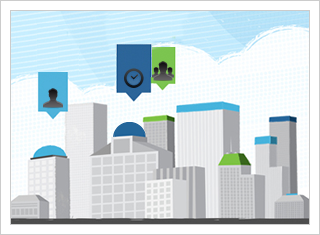
Agile software development continues to gain traction as it enters its second official decade in 2012. Development teams that use the methodology have found it improves quality, adds value and decreases risk. In fact, 77% of respondents to our 2012 IT and Software App Priorities Survey say Agile is a high or medium priority for 2012.
The Agile way is especially useful for projects requiring quick turn-around in chaotic situations with changing requirements. Its sprint-based nature and reliance on continuous integration (where new working versions are released on a 2- to 4-week basis) optimize quality and control risk.
Develop with the Agile Methodology
To ramp up projects quickly and ensure consistent quality and reliable delivery, we recommend an Agile approach with the following emphases:
1. Team-building: The first day of a project is usually dedicated to a team-building kick-off meeting with training or a refresher on Agile and Scrum. Kick-offs are often where feature estimation is handled. This ensures the entire team if up to speed and ready to create a user-focused solution.
2. Quality development: Teams take time to define the features or “user stories” they’re going to build. The product owner, acting as the customer’s representative, prioritizes feature requests and underlying functionality so a working version of the software is always delivered at the end of each sprint.
3. Clear endpoints: It’s vital that all team members understand the “definition of done” that applies to all feature requirements and acceptance tests for a given sprint. An important aspect here is that “done” is a binary condition; there is no such thing as 60% done, for example, on an Agile project.
Forget the Waterfall
If this feels contrary to the traditional waterfall model of development, that’s because it is. Agile projects tend to be more collaborative and transparent. And that makes them ideal for outsourced teams. Let’s talk.
